Gravel is a versatile material that might not mean anything if you aren't a builder. Knowing how to level ground for gravel is essential for DIYers and beginners in gardening. Therefore, we did some research and have the answers to this topic below.
You could use gravel instead of asphalt to make your yard more appealing. Here are a few steps you should follow when preparing the ground for the stone:
- Mark and measure the area you need to put the gravel.
- Dig out the site.
- Compact the soil.
- Add fabric and a border along the perimeter.
Gravel is not only suitable for driveways and footpaths but also gardens. Continue reading as we detail the gravel laying steps and how to make a gravel garden. With that said, let's dive in!
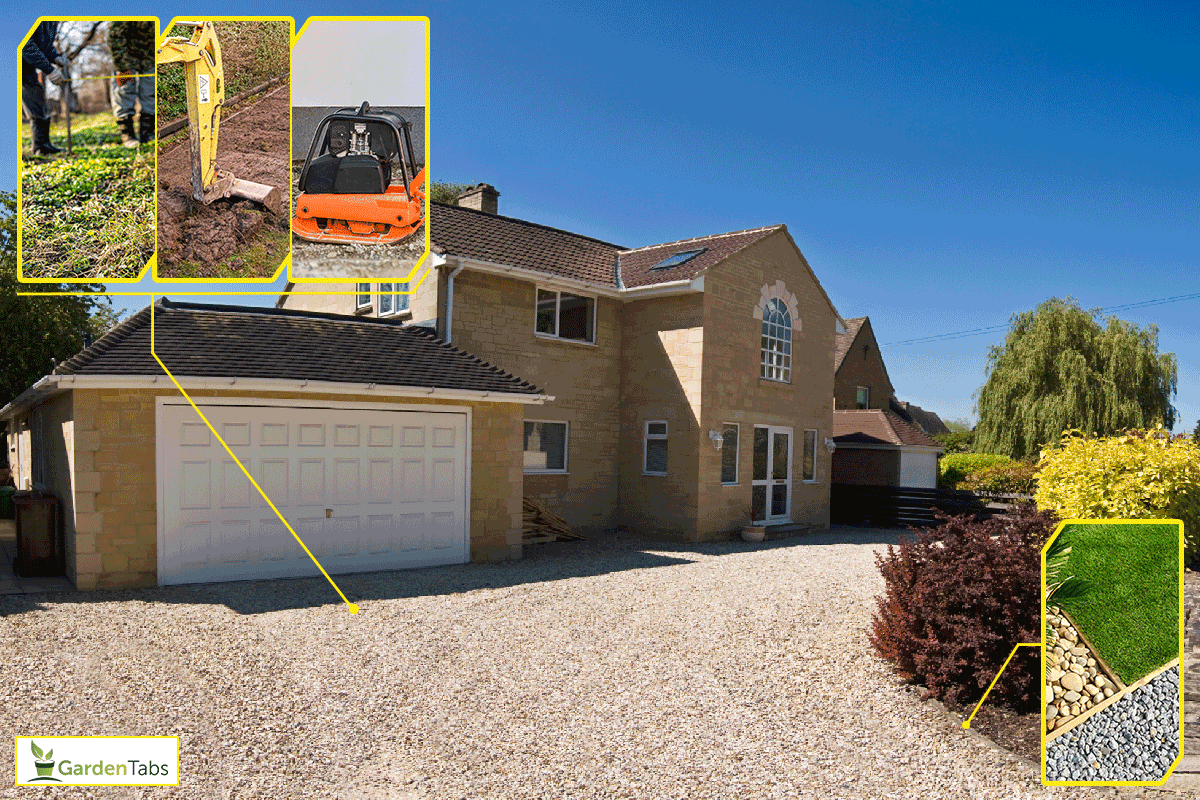
Leveling The Ground For Gravel
It would help if you prepared the ground before laying the gravel. It isn't an easy process, and you'll need some heavy equipment for the work. Ideally, plan to accomplish as much work as possible in a day.
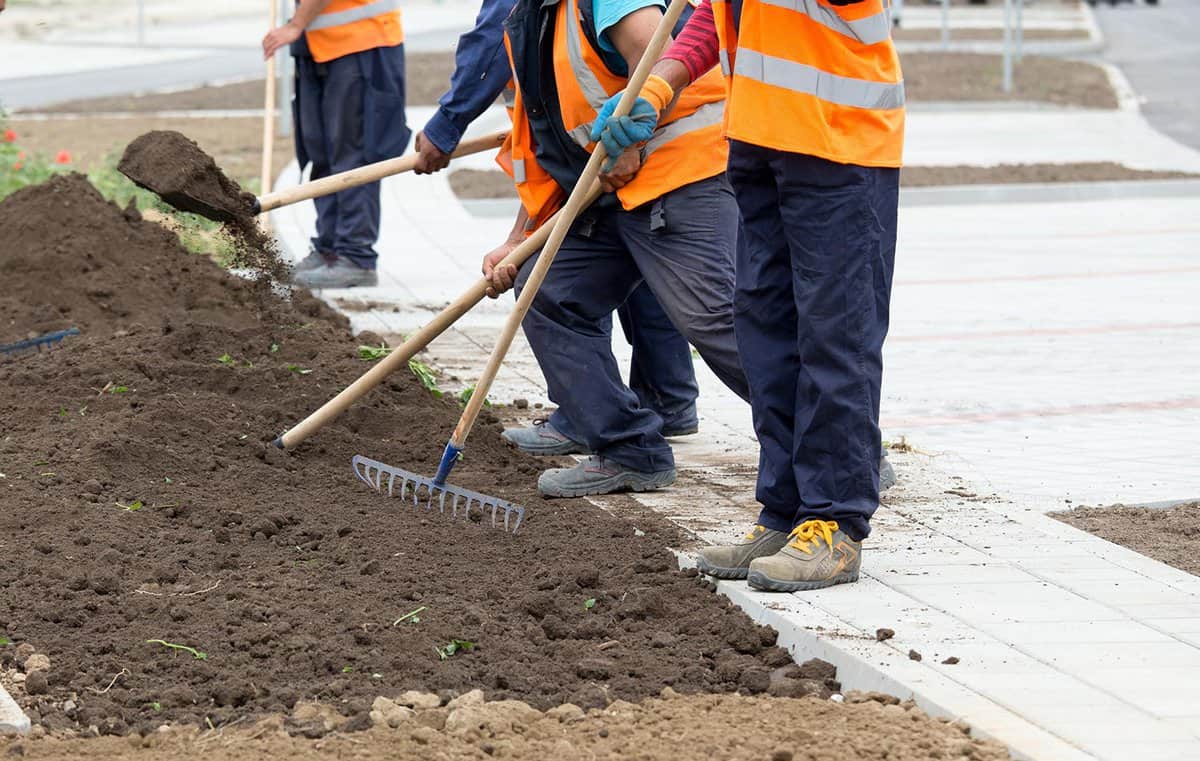
Purchase or rent the necessary equipment. The materials you need can be purchased at any local hardware and landscaping store. You'll need the following tools and materials:
- Landscaping fabric
- Hoes
- Twine
- Square-edged shovel
See this square shovel on Amazon.
- Stakes
- Bulldozer
- Compactor/Roller
Check out this compactor on Amazon.
- Gloves
- Border materials
Here's some Landscape Edging on Amazon.
- Measuring tape
- Gravel in three sizes
Start preparing the ground when you have all the equipment and materials ready.
Measure And Mark

Use the twine, measuring tape, and border materials to mark and measure the area you would like to work on. Take your time to take the correct measurements and use the stakes to make the markings.
Dig
Outline the area with a hoe and start digging. Dig four to six inches for each layer of gravel to be installed. A flat-ended shovel will give the desired results. For large areas, rent a bulldozer to complete the work faster.
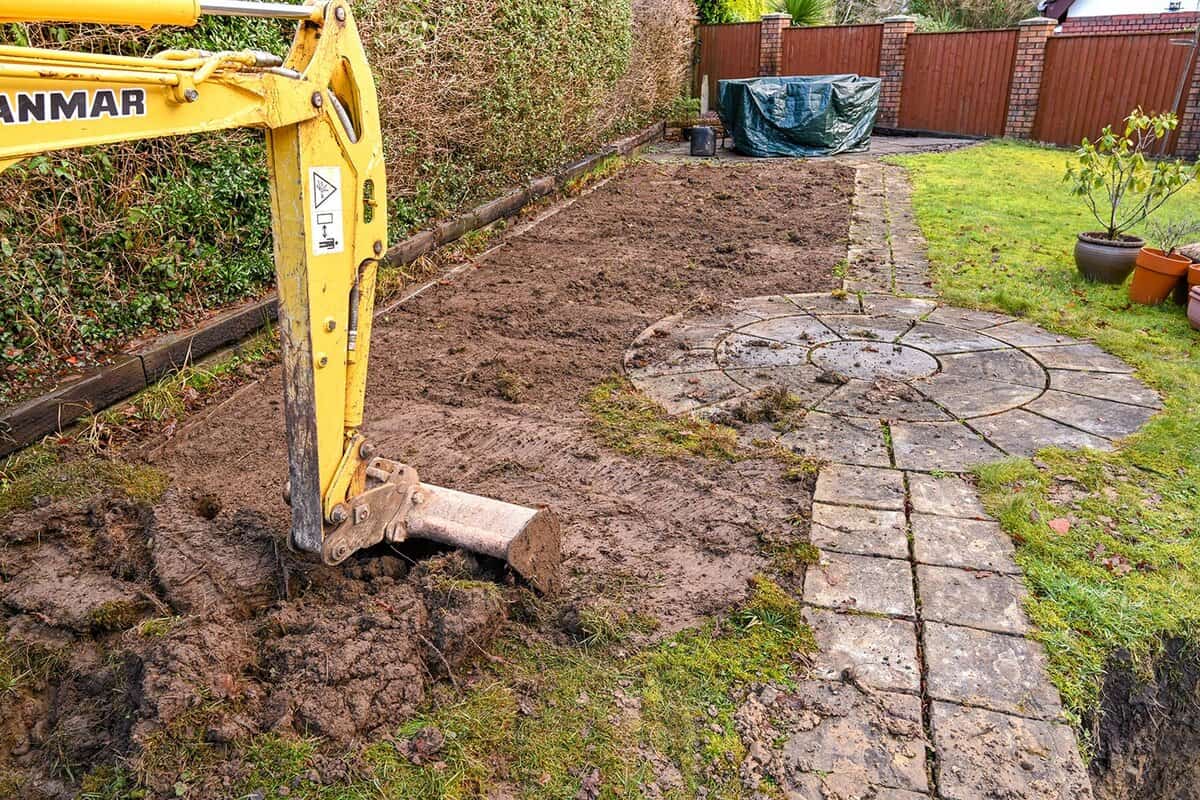
Compact The Soil
After the soil has been disturbed, pat it down. Old trees may have delicate root systems. To avoid killing them, do thorough research before you start digging.
Finally, pat the soil down hard and ensure the area is level. The soft spongy ground will create gullies which will result in erosion.
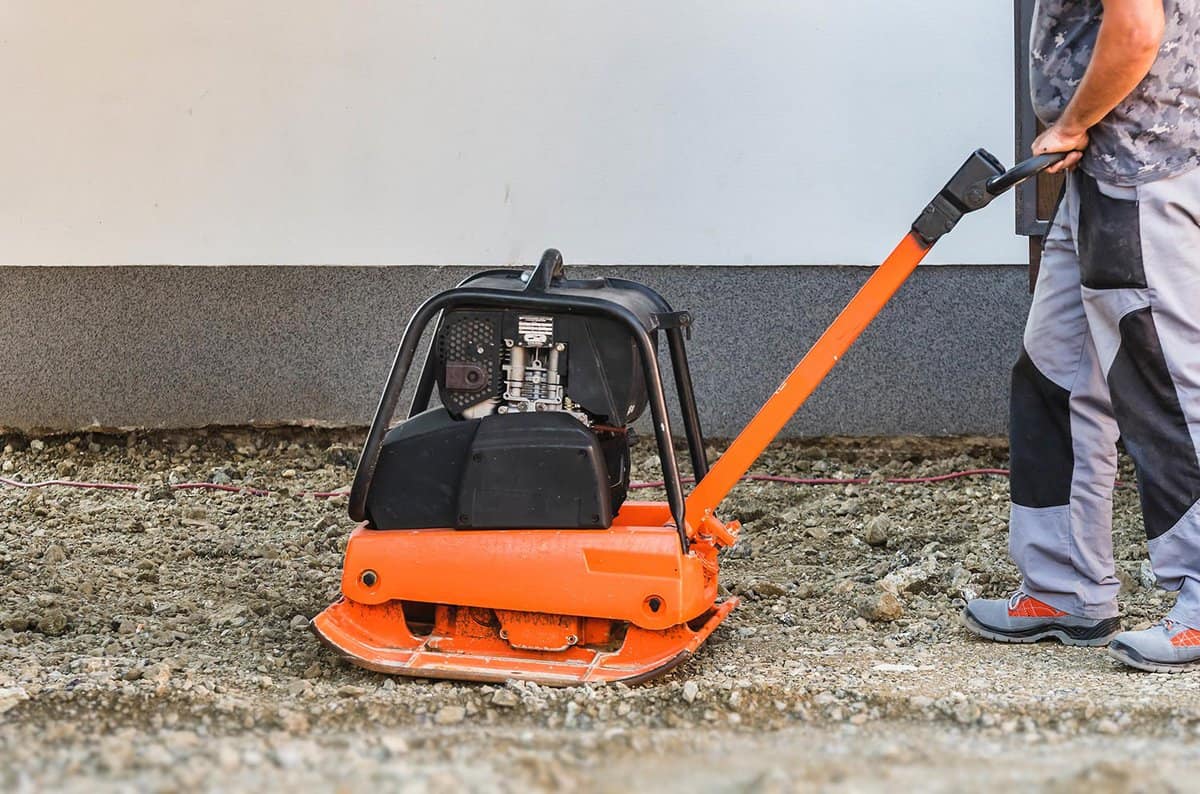
Put Border & Fabric
A border is not compulsory but helps reduce the loss of gravel. Lay the landscaping fabric and put stakes to stop it from being blown away if you aren't pouring the stone immediately.

How To Lay Your Gravel
Gravel comes in several sizes and needs to be distributed accordingly. Once you have the gravel purchased and delivered, get to work.
Here are the steps you should follow:
- Pour the first layer; these are huge stones.
- Evenly distribute it over the area.
- Compact it using a compactor machine.
- Pour the second layer of gravel. Use gravel size 57, which is about two three-inch stones.
- Use the compactor to tamp the second layer of gravel.
- Put the third layer of gravel. The stones should be no bigger than a golf ball. The appropriate size is 21. Tamp down the edges carefully as well.
- Finally, grade the top layer for drainage. Maintain the gravel yearly and lay a new layer every two or three years.
- Clean the surroundings of any stones and gravel and remove the stakes.
What Are Different Types Of Gravel?
Gravel is a wonderful construction material available in several sizes and coarseness. Choose the right size and type for your project and what will suit your climate area.
In the market, you'll find:
Recycled Gravel
Reclaimed stones from old pavers and crushed concrete make workable gravel with different coarseness and sizes. It is a relatively cheaper option.
Quarry Rocks
They are readily available and much cheaper. Quarry rocks can be found in abandoned quarries. They should be crushed to get the desired coarseness and size.
Coarse Gravel
It's ideal for high-traffic areas such as driveways and poorly draining soils. It can be put under pavers that support heavy weights.
Medium Gravel
Most constructions use medium gravel. It allows drainage and supports relatively heavy traffic. Medium gravel sits well under pavers due to its size.
Fine Gravel
Although coarser when compared to sand, it's more compact and doesn't allow proper drainage. You won't need to add pavers when using fine gravel.
Here is a video detailing the differences between gravel and crushed rock:
Laying Gravel For A Footpath
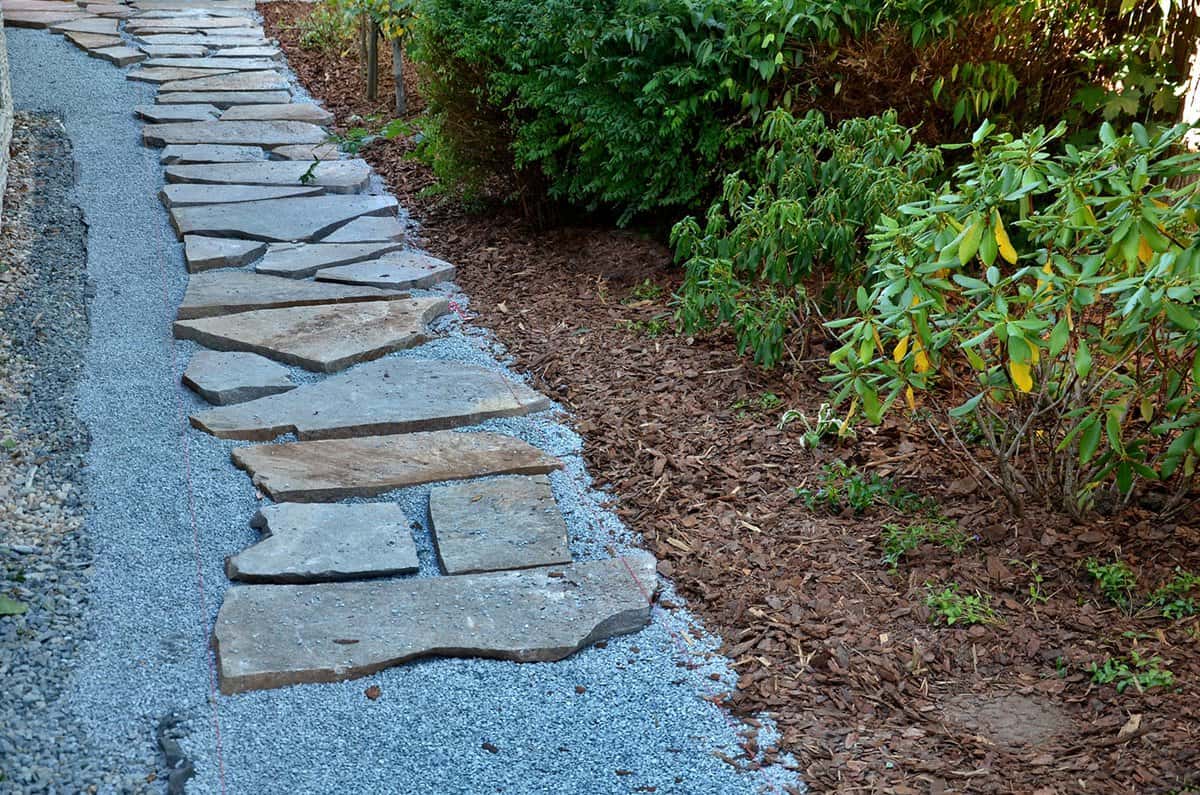
Neat sidewalks and footpaths are a part of a beautiful and well-maintained yard. If you want to create a new footpath or repair an existing one, you could use gravel instead.
It's an easy-to-maintain material and durable. Create a beautiful trial without breaking your budget and back. The shape of the walkway will depend on the yard.
- Start by outlining the area and measuring the size of the footpath. The standard width is three or four feet with a depth of four inches.
- Remove the excess soil and even out the trench using a square-edged shovel—compact the ground with a hand tamper.
- Add an edge to contain the gravel from spilling over. The edge can be cedar, galvanized steel, cobblestone, or bricks.
- Use a mixture of 3/4-inch stones and stone dust. Level and tamp it down using a six or eight-inch hand tamper.
- Line the trench with a piece of landscaping fabric after adding 2 1/2 inches of packed stone. Hold it down using spikes.
- Pour the gravel. Ensure you leave a 1/2 inch from the top. Rake and level it to cover the edges neatly.
You might want to hire a landscaper if you don't have the time for such a project. Watch the following video to see the process in a timeline:
The Perks Of Having A Gravel Garden
Gardens, big or small, are planned outdoor spaces that can bring the yard and house together. Gravel gardens might not paint a picture of being colorful, but they are!
They are easier to maintain than traditional gardens. You can plant drought-tolerant plants and flowers as well. Create a gravel garden when you have designed the ideal shape for it.
Ensure the garden has the correct gravel size for proper drainage and for the plants to root correctly. Have a maintenance plan for your gravel garden.
Are Landscaping Fabrics Necessary?
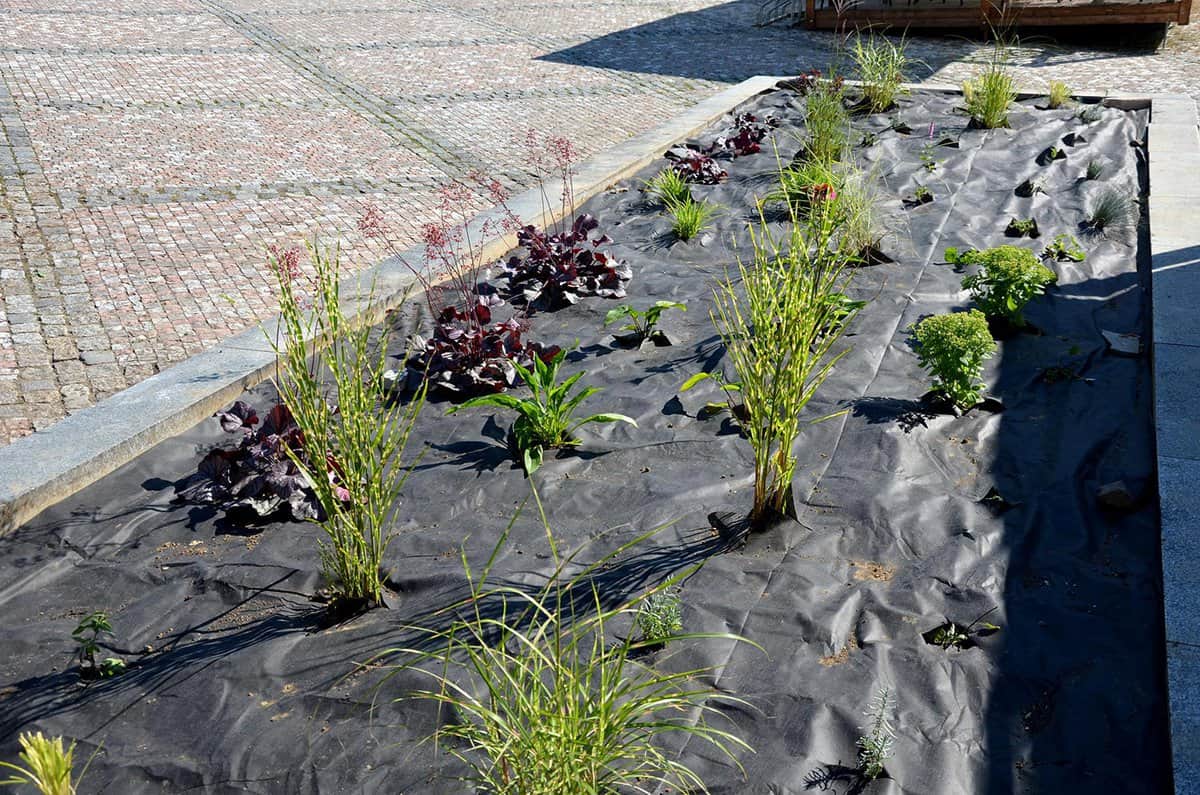
Yes, they are! Although they have pros and cons, they are necessary when laying gravel on the ground. Landscaping fabric is sometimes called a weed barrier or weed blocker.
The benefits are:
- Stops weeds from growing on the footpath, garden, or driveway.
- Reduces the need for using weed controls.
- It helps keep the rocks or gravel from sinking further into the ground.
- Reduces soil erosion and retains moisture.
The downsides of landscaping fabric are a few but substantial:
- It can be time-consuming to install around plants.
- Compacted soil wouldn't develop earthworms to aerate.
- The ground may become unhealthy with the barrier installation.
- Debar water from getting to the plants and flowers in the garden.
Once you decide whether or not you need landscaping fabric, install it correctly.
Types Of Landscaping Fabric
Due to the high demand and drawbacks, manufacturers have produced an array of fabrics to choose from. The fabrics are made from different materials, each with its characteristics. These include:
Non-woven
The landscaping fabric is solid and made of polyester or polypropylene. Non-woven landscaping fabric is ideal for footpaths and driveways.
Perforated
These fabrics have little holes in them. Perforated materials are suitable for vegetable gardens and flower beds. They are ideal in areas with little to no foot traffic.
Woven
A landscaping woven fabric is made of linen or polypropylene. The small holes make it perfect for trees and shrubs while choking weeds.
Spun
It is a fabric made from bonded polyester using heat. Some spun landscaping fabrics are thick, while others are thin. The thin spun landscaping fabrics are more absorbent and can be used for flower beds.
In Closing
Leveling the ground properly and putting a weed barrier are mandatory steps. The gravel will sit and drain well in the compacted soil. Use the right tools and equipment to work fast.
Footpaths, walkways, and gravel gardens are ways to revamp your front yard cost-efficiently. Invite friends to help and get in touch with nature too!
Get more interesting tips and steps from the following posts:




Various testing methods prove our UV-resistant BaseCore™ Geocell HD durable for load support, slope embankments, and other uses.